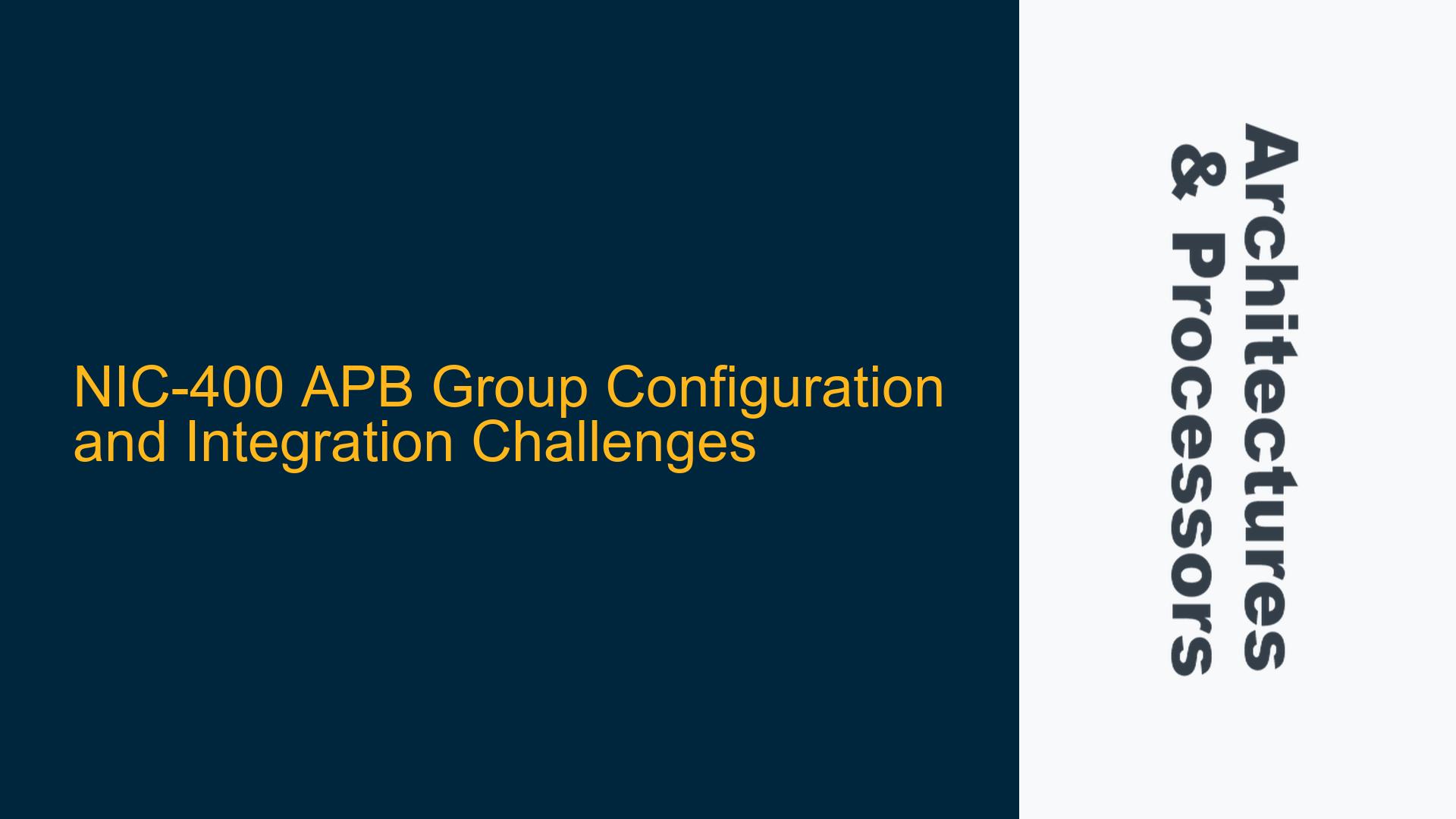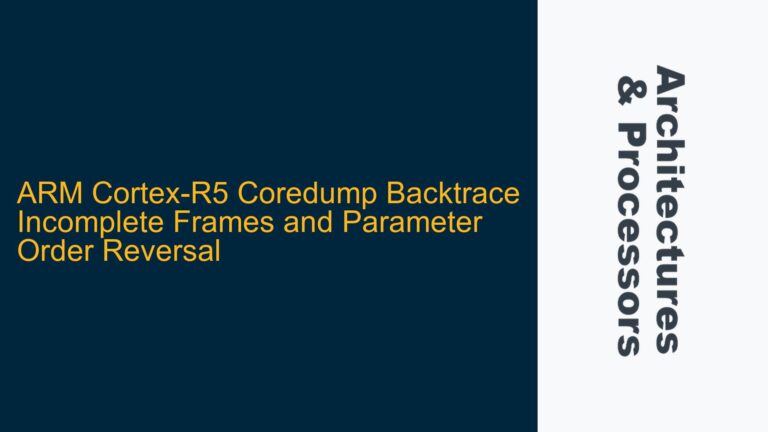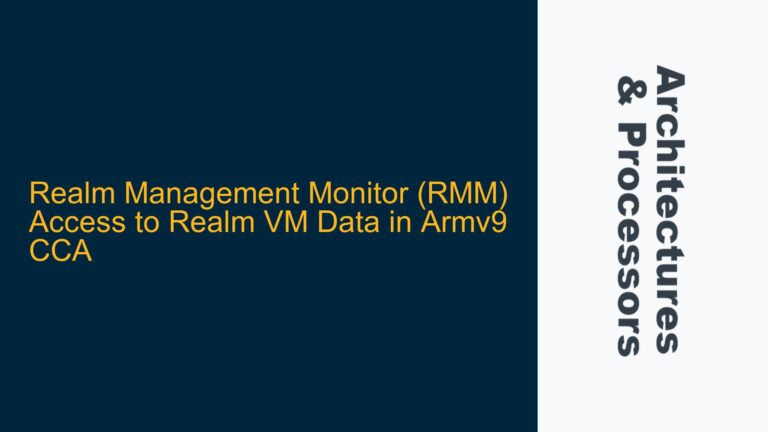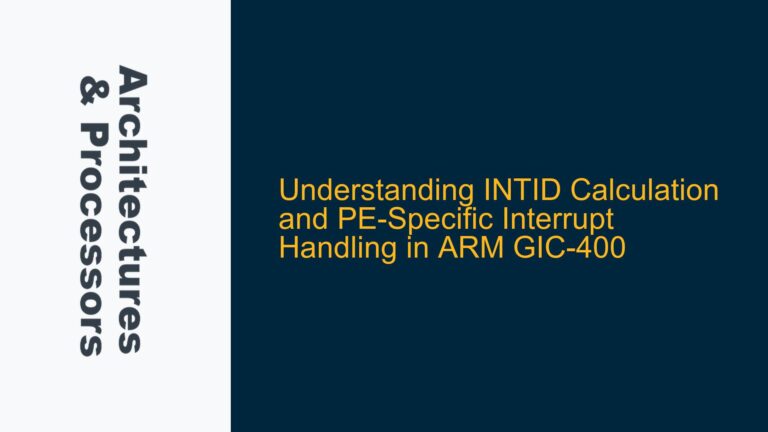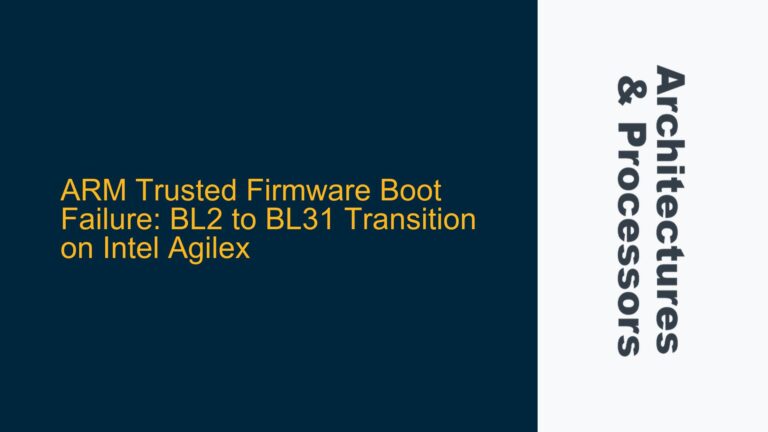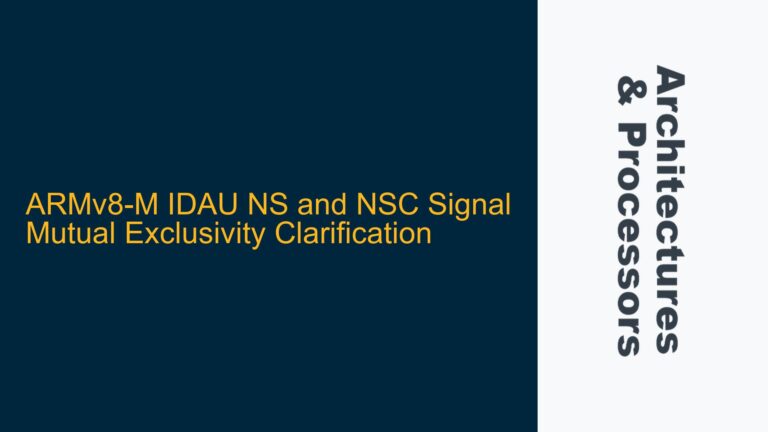Understanding NIC-400 APB Groups and Their Role in AMBA Interconnect
The NIC-400, a highly configurable network interconnect from ARM, is designed to facilitate efficient communication between various components in a System-on-Chip (SoC). One of its key features is the ability to manage multiple Advanced Peripheral Bus (APB) master interfaces through the use of APB groups. These groups are essential for organizing and optimizing the communication between the NIC-400 and peripheral devices such as I2C, SPI, UART, and GPIO controllers.
An APB group in the NIC-400 context is a logical construct that allows the interconnect to manage multiple APB master interfaces efficiently. According to the ARM Socrates for CoreLink Network Interconnects User Guide, an APB group is used to specify a NIC interface that bridges between 1 and 16 APB master interfaces. This means that the NIC-400 can handle up to 16 APB master interfaces within a single APB group, which is then connected to the same APB Advanced Microcontroller Bus Interface (AMIB).
The primary purpose of APB groups is to streamline the communication between the NIC-400 and the APB peripherals. By grouping multiple APB master interfaces together, the NIC-400 can reduce the complexity of the interconnect fabric, improve performance, and simplify the overall design. However, this also introduces certain challenges, particularly when it comes to correctly configuring and integrating these groups within the SoC.
In the context of the error message "An APB Group must be referenced by MasterInterface:r_i2c. If an APBGroup does not already exist then one must first be created," it is clear that the NIC-400 is expecting a specific configuration where each APB master interface is associated with an APB group. This requirement is crucial for ensuring that the NIC-400 can properly manage the communication between the APB master interfaces and the peripherals they control.
Misconfiguration of APB Groups and Master Interface Assignments
The error message encountered during the generation of the NIC-400 specification indicates a misconfiguration in the assignment of APB master interfaces to APB groups. This misconfiguration can arise from several potential causes, each of which needs to be carefully examined to resolve the issue.
One possible cause is the absence of an APB group for the APB master interfaces. In the NIC-400, each APB master interface must be associated with an APB group. If no APB group has been created, the NIC-400 will not be able to manage the communication between the APB master interfaces and the peripherals. This is why the error message explicitly states that an APB group must be created if one does not already exist.
Another potential cause is the incorrect assignment of APB master interfaces to APB groups. The NIC-400 allows for the creation of multiple APB groups, each of which can manage up to 16 APB master interfaces. However, if an APB master interface is not correctly assigned to an APB group, the NIC-400 will not be able to properly route the communication between the master interface and the peripheral. This can lead to the error message indicating that the APB group must be referenced by the master interface.
A third possible cause is the misunderstanding of the relationship between APB groups and the APB AMIB. The APB AMIB is the interface that connects the APB group to the rest of the NIC-400 interconnect. If the APB group is not correctly configured to interface with the APB AMIB, the NIC-400 will not be able to manage the communication between the APB master interfaces and the peripherals. This can result in the error message indicating that the APB group must be referenced by the master interface.
In the specific case of the error message referencing the MasterInterface:r_i2c, it is clear that the I2C master interface is not correctly associated with an APB group. This could be due to the absence of an APB group, the incorrect assignment of the I2C master interface to an APB group, or a misconfiguration in the APB AMIB interface. Each of these potential causes needs to be carefully examined to resolve the issue.
Correctly Configuring APB Groups and Resolving Master Interface Assignment Errors
To resolve the error message "An APB Group must be referenced by MasterInterface:r_i2c. If an APBGroup does not already exist then one must first be created," a systematic approach to configuring the APB groups and assigning the APB master interfaces is required. This involves several steps, each of which must be carefully executed to ensure that the NIC-400 is correctly configured.
The first step is to create an APB group if one does not already exist. This can be done using the ARM Socrates tool, which provides a graphical interface for configuring the NIC-400. Within the Socrates tool, navigate to the APB group configuration section and create a new APB group. This group will serve as the logical container for the APB master interfaces.
Once the APB group has been created, the next step is to assign the APB master interfaces to the group. In the case of the error message referencing the MasterInterface:r_i2c, the I2C master interface must be assigned to the newly created APB group. This can be done by selecting the I2C master interface within the Socrates tool and assigning it to the APB group. Repeat this process for the other APB master interfaces (SPI, UART, and GPIO) to ensure that all interfaces are correctly assigned to the APB group.
After assigning the APB master interfaces to the APB group, the next step is to configure the APB AMIB interface. The APB AMIB is the interface that connects the APB group to the rest of the NIC-400 interconnect. Within the Socrates tool, navigate to the APB AMIB configuration section and ensure that the APB group is correctly configured to interface with the APB AMIB. This involves setting the appropriate parameters for the APB AMIB, such as the address range, data width, and clock frequency.
Once the APB group and APB AMIB have been correctly configured, the final step is to validate the configuration. This can be done by running the NIC-400 specification generation process again within the Socrates tool. If the configuration is correct, the error message should no longer appear, and the NIC-400 specification should be successfully generated.
In addition to the steps outlined above, it is also important to consider the overall architecture of the SoC and how the NIC-400 fits into this architecture. The NIC-400 is a critical component of the SoC, and its configuration can have a significant impact on the performance and functionality of the entire system. Therefore, it is essential to carefully review the design specifications and ensure that the NIC-400 is configured in a way that meets the requirements of the SoC.
For example, if the SoC includes multiple APB peripherals that require high-bandwidth communication, it may be necessary to create multiple APB groups and assign the APB master interfaces to different groups. This can help to distribute the communication load across multiple APB groups and improve the overall performance of the SoC. Conversely, if the SoC includes only a few APB peripherals, a single APB group may be sufficient to manage the communication between the APB master interfaces and the peripherals.
In conclusion, the error message "An APB Group must be referenced by MasterInterface:r_i2c. If an APBGroup does not already exist then one must first be created" is a clear indication of a misconfiguration in the assignment of APB master interfaces to APB groups within the NIC-400. By following the steps outlined above, it is possible to correctly configure the APB groups and resolve the error message. However, it is also important to consider the overall architecture of the SoC and ensure that the NIC-400 is configured in a way that meets the requirements of the system. This will help to ensure that the SoC performs as expected and that the communication between the APB master interfaces and the peripherals is efficient and reliable.
